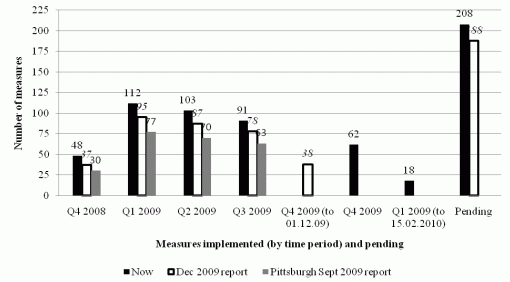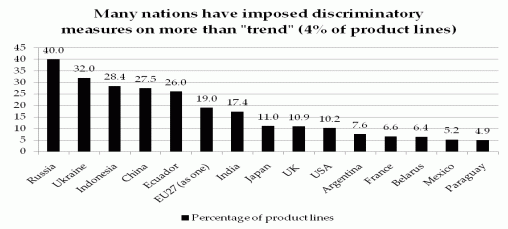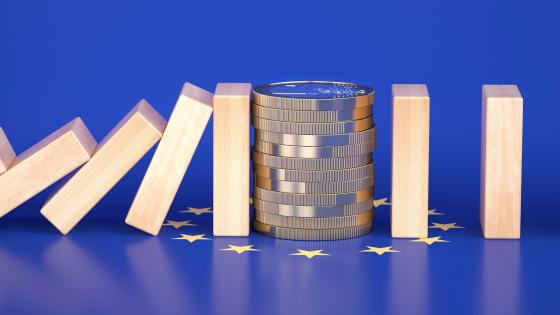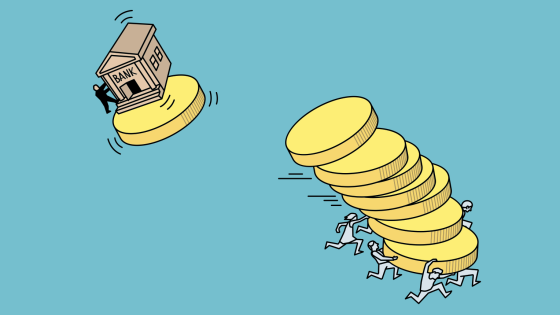After contracting sharply in the first half of 2009, many economies stabilised and some even began to recover in the last quarter of 2009. Using information compiled through mid-February 2010, the fourth report of the Global Trade Alert examines whether macroeconomic stabilisation has altered governments' resort to protectionism. Has economic recovery advanced enough so that national policymakers now feel little or no pressure to restrict international commerce? Or is the recovery so nascent that governments continue to discriminate against foreign commercial interests, much as they did during the darker days of 2009? The answers to these questions will partly determine what contribution exports and the world trading system is likely to play in fostering growth during 2010.
This report is published in February 2010 to coincide with the Jeddah Economic Forum. State measures announced and implemented from November 2008 fall within the remit of the GTA. Consequently, this report sheds light on the extent, nature, and possible harm done by discriminatory state measures taken since global financial markets and subsequently the global economy went into free fall. In contrast to our previous report, where particular attention was given to developments in the Asia-Pacific region, this report assesses commercial policy developments and prospects in the Gulf region. An assessment as to the extent and changes over time in protectionist dynamics is also provided for in this report, by considering not just the quarter-by-quarter changes in the numbers of protectionist measures implemented but also the number of pending measures that have been announced and are expected to be implemented in the future. Information on the pending measures provides policymakers with an "early warning" of what is to come, a feature unique to the GTA's monitoring initiative.
This report and recent postings on the GTA website point to four principal findings.
Finding 1: Protectionism continues apace despite stabilisation and recovery
The fourth quarter of 2009 saw many economies stabilise and some began to recover. Did this good news take the pressure off policymakers to protect local firms and workers? With data through to mid-February 2010 the latest Global Trade Alert report examined this question and found:
- Stabilisation certainly hasn't ended protectionism. Since the beginning of the fourth quarter of 2009 a substantial number (80) of beggar-thy-neighbour policies have been implemented. Given reporting lags, this rate of protectionism is not out of line with the quarterly rates experienced in 2009.
- The types of protectionism used the most haven't changed as economies stabilised. Bailouts of manufacturing and financial firms as well as trade defence measures account more than half (47) discriminatory state measures implemented since the fourth quarter of 2009 began.
- If anything, G20 governments have been responsible for a slightly higher percentage (64%) of protectionist measures since stabilisation began.
In short, not much has changed. Any benefits of stabilisation and recovery have yet to kick in as far as protectionism is concerned.
The latest update of the GTA saw over 150 new reports of state measures added in just over two months. This substantial addition to the database has led to three other significant findings---which have little to do with stabilisation of economies.
Finding 2: GTA has revised up its 2009 estimates of the quarterly rate of protectionism by over 40%
What a difference five months makes. The best information available to the GTA team in September 2009 led to estimates in our pre-Pittsburgh report that countries were imposing 70 discriminatory measures per quarter. Now our best estimate of the quarterly rate is more than 40% higher (see Figure 1 below), namely, 100 discriminatory measures per quarter. It takes time to nail down murky protectionism (the resort to which governments aren't too keen to advertise). The upshot for policymakers was that 2009 was much worse in terms of protectionism than previously thought. Another implication is that there is much more protectionism to unwind in 2010 and as the recovery unfolds.
(Recent examples of far-reaching discriminatory measures taken since the beginning of the fourth quarter are referred to in finding 4 below.)
Figure 1. Far more protectionism was imposed in 2009 than originally thought.
Finding 3: Almost every major trading nation, except Canada and Brazil, has implemented above trend levels of discrimination against foreign commercial interests
Critics of the Global Trade Alert previously argued that protectionism happens every year and they weren’t convinced that 2009 was unusual. We took the most conservative "trend" level of protectionism articulated by a sceptic, that of measures affecting 4% of all product lines per annum. As the figure below shows, since the first G20 summit in November 2008 almost every major trading jurisdiction has breached the 4% threshold. Protectionism in 2009 may not have hit 1930s levels, but it was certainly well above-trend in almost every major trading nation. One more argument to used downplay contemporary protectionism can be discounted.
Figure 2.
Finding 4: From the beginning of the fourth quarter of 2009 a number of the largest trading economies have taken far-reaching measures that discriminate against foreign commercial interests. Many of these measures have received little media attention.
While recovery beckons, many of the largest trading nations have been quietly introducing regulations that further discriminate against commercial interests. Few of the following measures have received much media coverage, yet the measures concerned often cover many sectors and types of trade.
China, for example, introduced an accreditation procedure for firms seeking to bid for a wide range of high tech state contracts. Nigeria used security considerations to introduce another lay of bureaucracy on all imports and exports out of that country. The US House of Representatives has passed more legislation with Buy America provisions in. The implementation of Russia's dramatic change in trade strategy continues, with decree following decree coming out of the Kremlin. Depressingly, Mexico recently announced that it is now postponing or reversing some of its previously-announced across-the-board tariff liberalisation.
An appendix of nine recent measures from large trading partners, none of which are confined to a small amount of commerce etc, is available upon request. A brief description of each measure, the official sources involved, and the GTA entry information are provided. These measures should dispel any notion that the major players are occasionally indulging in low-intensity protectionism, such as spats over antidumping.
Appendix
Below is reproduced the Global Trade Alert's League Table of Harm, that is, the rankings of countries by different indicators of how much harm their discriminatory state measures have done. Russia is still in the top 5 on every metric. Some countries--such as China and India--that complain a lot about being hit by other countries' protectionism inflict plenty of harm themselves.
Table 1. Which countries have inflicted the most harm?
|
|
Metric, Country in specified rank, Number
|
|
Ranked by number of (almost certainly) discriminatory measures imposed
|
Ranked by the number of tariff lines (product categories) affected by (almost certainly) discriminatory measures
|
Ranked by the number of sectors affected by (almost certainly) discriminatory measures
|
Ranked by the number of trading partners affected by (almost certainly) discriminatory measures
|
|
1
|
EU 27 (123)
|
Russia (486)
|
Algeria (54)
|
Indonesia (153)
|
|
2
|
Russia (43)
|
Ukraine (388)
|
EU 27 (35)
|
EU 27 (149)
|
|
3
|
Argentina (27)
|
Indonesia (345)
|
Ecuador (30)
|
India (141)
|
|
4
|
Germany (24)
|
China (334)
|
Indonesia (28)
|
China (138)
|
|
5
|
UK (19)
|
Ecuador (316)
|
Russia (25)
|
Russia (137)
|
|
6
|
China (16)
|
EU 27 (231)
|
China (24)
|
Argentina (129)
|
|
7
|
Italy (15)
|
India (211)
|
Mexico (24)
|
UK (122)
|
|
8
|
Indonesia (14)
|
Japan (134)
|
Belarus (23)
|
USA (120)
|
|
9
|
Brazil (13)
|
UK (132)
|
Ukraine (23)
|
France (118)
|
|
10
|
Hungary (13)
|
USA (124)
|
Germany (21)
|
Germany (116)
|
Note: There is no single metric to evaluate harm. Different policy measures affect different numbers of products, economic sectors, and trading partners. GTA reports four measures of harm.





